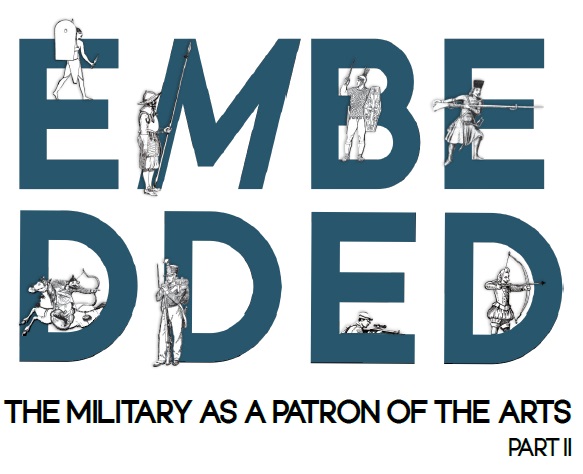Movements and Monuments

- This event has passed.
Conference “Embedded: The Military as a Patron of the Arts”. Part II
12 February @ 5:30 pm - 15 February @ 12:30 pm CET
Organized by Mischa Gabowitsch and Jan Kusber, with generous support from the Georg Forster Forum
See conference website.
All over the world, militaries have long acted as patrons of the arts. Individual generals have struck up friendships with painters, sculptors, and architects. Sketch artists and photographers have accompanied soldiers as embedded visual artists. Armies have created artistic programs and institutions such as the Grekov Studio in the Soviet Union and post-Soviet Russia, the Wehrmacht’s Squadron of Visual Artists, or the U.S. Army Combat Artists Program. Military patronage of the arts has resulted in a wide array of artistic products, ranging from drawings and paintings via small war memorials and soldiers‘ cemeteries to battlefield panoramas, equestrian statues, and military cathedrals. Militaries have also funded and produced music and dance performances as well as films and TV programs.
Continuing a workshop that took place in Vienna in June 2024, this interdisciplinary conference aims to explore the structure and effects of military patronage of the arts across all times and places. It seeks to go beyond the time-honored theme of “the artist in uniform” to ask how relationships between militaries and artists are formed and how they influence artistic styles, themes, and tastes. What kind of art do militaries like? What modes of valuation are applied to military art, and how are they translated between different social spheres? What are its audiences? And how is art commissioned by militaries viewed by the art world at large and the general public? These are some of the questions this conference seeks to address, combining perspectives from history, sociology, and the history of art and resulting in an edited volume along with contributions from the Vienna workshop.
The conference will take place in Mainz, Germany, on February 12-15, 2025, at the JGU’s Philosophicum. The working language is English. The conference is open to the public.
New Zealand artist Kingsley Baird, who designed the Tomb of the Unknown Warrior in Wellington, will deliver the keynote lecture on February 12 at 5.30 pm.
The conference will the continue until 12.30 pm on February 15th with contributions by, among others, Anmol Yasmin Ahmed (Vienna), Izabela Curyłło-Klag (Kraków), Hauke Dorsch (Mainz), Mayhill Fowler (DeLand, Florida), Nina Franz (Braunschweig), Mischa Gabowitsch (Germersheim), Hilkka Hiiop (Tallinn), Lourdes Hurtado (Franklin, Indiana), Linda Kaljundi (Tallinn), Andrea Kocsis (Edinburgh), Jan Kusber (Mainz), Kristo Nurmis (Tallinn), Konstantin Pakhaliuk (Haifa), Martin Rempe (Konstanz), Alexander Reznik (Yerevan), Franziska Seraphim (Boston), Géraud Seznec (Paris), Robert Treufeldt (Tallinn), and Pieter Trogh (Ypres).
A detailed program and the conference poster can be downloaded from the event website.
Administrative assistance is provided by Ainura Garaeva, Natalia Kupermann, and Christine Sauter. Poster design: Anastasia Bauer.
